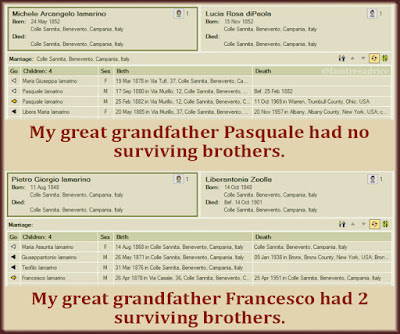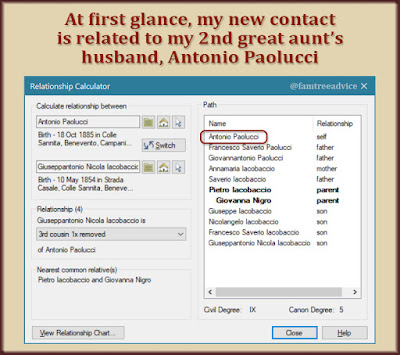A new genealogist is born every day. Do they all know what to do? Not yet!
Some readers have asked me for an all-in-one family tree tutorial. At first I thought that wasn't possible. It's too vast. Many of my articles go in-depth on a specific part of genealogy, like:
- dealing with DNA matches
- cleaning up your filing system
- adding consistency to your facts
- finding and fixing errors
- sharing your research in interesting ways
Whether you're new to genealogy or dove into the deep end, a "start-to-finish genealogy process" would help.
So let's boil down the idea of family tree research to the basics.
Start With Yourself
Imagine a very old fence made of stones. You can't build the top row of stones without the foundation beneath it, right? Well, don't expect to find your 2nd great grandfather without the foundation of his descendants.
Building a family tree is a one-generation-at-a-time process.
Each time you add a generation you gain more facts. Those facts tell you where to look for more information.
As you add family members, think about all the types of documents you may find:
- census records (right now the most recent U.S. census available is from 1940)
- vital records (birth, marriage, death)
- church records (baptism and other sacraments)
- public records (street address, yearbooks, newspaper articles)
- military records (draft registrations and military service)
- citizenship records (immigration and naturalization)
Search for and gather every type of record you can.
 |
| Ready-made family trees are NOT what you want. You want the documents. |
Keep Track of All Sources
As you gather each document, immediately capture its source information.
Let's say you're using Ancestry.com to find your father or grandfather in the 1940 U.S. census. You can click "View Image" to see the document. But in the search results you can also click the words "1940 United States Federal Census". Beneath the listing of facts you'll see "Source Citation" and "Source Information". Copy that text and store it as the citation for the census image.
If you find a document on FamilySearch.org, click the listing (not the camera). Look for "Document Information" in the right-hand column. You'll find a handy "Citing this Record" section to copy.
Be Logical
Imagine you've gathered every possible document for your grandfather's immediate family. Take a close look at the family grouping. Are there any facts that don't make sense?
- Do you have children born before their parents were old enough, or after a parent died? (Neat trick: a recently dead man can have a baby.)
- Was one child born in a different place even though there's no sign the family ever moved?
Be logical and avoid publishing bad information. If something is illogical, search for more evidence to prove it right or wrong.
Move Up One Generation at a Time
Say you found your grandparents' marriage certificate. It may tell you where they living at that time. It may have each of their parents' names and place of birth. Those names and birthplaces are the foundation you need to build the next course of your stone fence.
I have my maternal grandparents 1922 marriage certificate. It says my grandfather and my 4 maternal great grandparents were born in Italy.
Knowing that, I was ready to pinpoint their hometowns. When you reach a foreign-born generation, search for immigration and naturalization records.
 |
| The joy of a well-timed migration: tons of clues for your descendants. |
Ship manifests for your immigrant ancestors—if they are from a certain range of years—are crucial. You may learn the foreign hometown of your ancestor. You may learn the name of that ancestor's relative: father, mother, spouse, or more. These are the clues you need to go back another generation.
Be Methodical and Thorough
Try to "close out" each family unit before moving on. Gather every possible document for them. Make note of what you haven't found yet (like that one elusive census year) so you can try again in the future.
Pay close attention to the evidence. My 3rd great grandfather from Italy was a problem for me. I knew which town the family came from. I found birth records for all his children. I found his wife's birth record and her parents' names.
But I couldn't find his birth record. I knew he was born in about 1813, but there was no record of his birth.
Then I found the clue I needed. In his 1840 marriage record it clearly says he was born in another town. The neighboring town. That's why I couldn't find him or his siblings. I was looking in the wrong town.
Each document you find may have the answer to a mystery. My 2nd great uncle's World War II draft registration card had a critical clue I needed. The name of the town where he was born. His parents and his siblings, it turns out, were not from that town. But by searching that town's vital records, I discovered where his parents came from. And that cracked open that branch of the family.
Those are the basics. As you progress I've got tons of advice for ways to get and stay organized. And only after you've gone pretty far with your tree will you be able to find the connection to your DNA matches. In most cases, they're the icing on your cake. But you have to bake that cake.
Please see the Genealogy Lessons link on my blog for lots more articles listed by topic.










